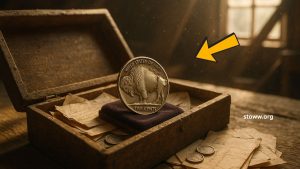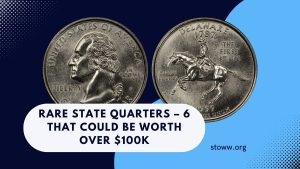The 1804 Draped Bust Silver Dollar is one of the most coveted coins in American numismatics, often referred to as the “King of American Coins.”
Despite being dated 1804, these coins were actually minted in the 1830s or later, adding to their mystique and allure among collectors.
In recent years, their value has soared, with one specimen fetching $7.68 million at auction, making it the second most expensive U.S. coin ever sold.
Understanding the 1804 Draped Bust Dollar
The 1804 Draped Bust Dollar is renowned for its elegant design and the intriguing history surrounding its production.
The obverse features a bust of Lady Liberty, facing right, with the word “LIBERTY” and the date “1804.” The reverse showcases a heraldic eagle with a shield, holding arrows and an olive branch, with the motto “E PLURIBUS UNUM” on a ribbon.
Classes of 1804 Dollars
There are three distinct classes of 1804 dollars, each with unique characteristics:
- Class I (Original): Struck in the 1830s for diplomatic gifts, these coins have lettered edges and no rust pit on the reverse.
- Class II (Restrike): Minted after 1857, these have plain edges and were struck over earlier coins, resulting in a rust pit on the reverse.
- Class III (Restrike): Also minted post-1857, these feature lettered edges and a rust pit on the reverse, distinguishing them from Class I coins.
Record-Breaking Sale
In August 2021, a Class I 1804 Draped Bust Dollar, believed to be the Sultan of Muscat’s specimen, sold for $7.68 million at a Stack’s Bowers Galleries auction. This sale underscored the coin’s exceptional rarity and desirability among collectors.
Factors Influencing Value
The value of the 1804 Draped Bust Dollar is influenced by several key factors:
- Condition: Coins in higher grades, such as Proof-68, are more valuable.
- Provenance: A documented history of ownership, especially by notable collectors or dignitaries, enhances value.
- Rarity: With only 15 known specimens, their scarcity significantly contributes to their high worth.
Investment Potential
Investing in rare coins like the 1804 Draped Bust Dollar can be lucrative. However, it’s essential to consult with numismatic experts and consider factors like market trends, coin authenticity, and proper storage to protect your investment.
Notable Sales of 1804 Draped Bust Dollars
| Year | Grade | Sale Price | Auction House |
|---|---|---|---|
| 1999 | Proof-68 | $4,140,000 | Bowers and Merena |
| 2008 | PR-62 | $3,737,500 | Heritage Auctions |
| 2013 | PR-58 | $3,877,500 | Heritage Auctions |
| 2021 | PR-68 | $7,680,000 | Stack’s Bowers |
The 1804 Draped Bust Dollar remains a testament to America’s early coinage history, captivating collectors and investors alike with its rich story and enduring value.
FAQs
Why are there no 1804-dated silver dollars actually minted in 1804?
Due to a bookkeeping error, the U.S. Mint believed that the last silver dollars struck were dated 1804, leading to the production of coins with that date in the 1830s for diplomatic purposes.
How many 1804 Draped Bust Dollars are known to exist?
There are only 15 known specimens, divided into three classes based on their characteristics and production methods.
What is the difference between Class I, Class II, and Class III 1804 dollars?
- Class I: Original coins struck in the 1830s for diplomatic gifts, featuring lettered edges and no rust pit on the reverse.
- Class II: Restrikes minted after 1857, with plain edges and struck over earlier coins, resulting in a rust pit on the reverse.
- Class III: Restrikes also minted post-1857, with lettered edges and a rust pit on the reverse.
What factors determine the value of an 1804 Draped Bust Dollar?
Key factors include the coin’s condition, provenance, rarity, and historical significance.



